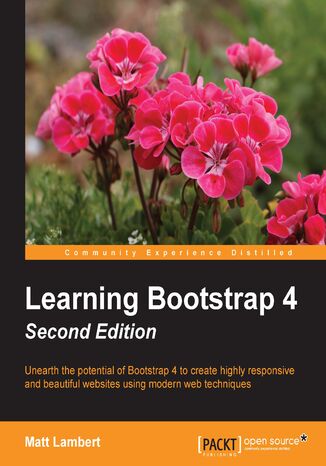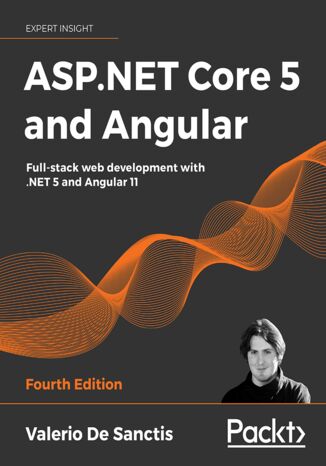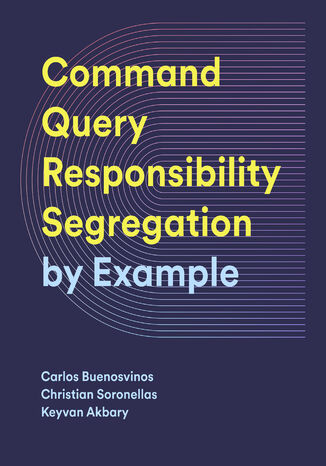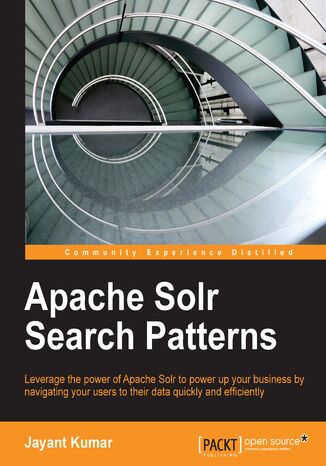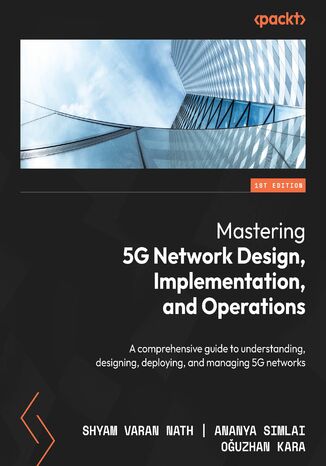Категорії
Електронні книги
-
Бізнес та економіка
- Біткойн
- Ділова жінка
- Коучинг
- Контроль
- Електронний бізнес
- Економіка
- Фінанси
- Фондова біржа та інвестиції
- Особисті компетенції
- Комп'ютер в офісі
- Комунікація та переговори
- Малий бізнес
- Маркетинг
- Мотивація
- Мультимедійне навчання
- Нерухомість
- Переконання та НЛП
- Податки
- Соціальна політика
- Порадники
- Презентації
- Лідерство
- Зв'язки з громадськістю
- Звіти, аналізи
- Секрет
- Соціальні засоби комунікації
- Продаж
- Стартап
- Ваша кар'єра
- Управління
- Управління проектами
- Людські ресурси (HR)
-
Для дітей
-
Для молоді
-
Освіта
-
Енциклопедії, словники
-
Електронна преса
- Architektura i wnętrza
- Безпека життєдіяльності
- Biznes i Ekonomia
- Будинок та сад
- Електронний бізнес
- Ekonomia i finanse
- Езотерика
- Фінанси
- Особисті фінанси
- Бізнес
- Фотографія
- Інформатика
- Відділ кадрів та оплата праці
- Для жінок
- Комп'ютери, Excel
- Бухгалтерія
- Культура та література
- Наукові та академічні
- Охорона навколишнього середовища
- Впливові
- Освіта
- Податки
- Подорожі
- Психологія
- Релігія
- Сільське господарство
- Ринок книг і преси
- Транспорт та спедиція
- Здоров'я та краса
-
Історія
-
Інформатика
- Офісні застосунки
- Бази даних
- Біоінформатика
- Бізнес ІТ
- CAD/CAM
- Digital Lifestyle
- DTP
- Електроніка
- Цифрова фотографія
- Комп'ютерна графіка
- Ігри
- Хакування
- Hardware
- IT w ekonomii
- Наукові пакети
- Шкільні підручники
- Основи комп'ютера
- Програмування
- Мобільне програмування
- Інтернет-сервери
- Комп'ютерні мережі
- Стартап
- Операційні системи
- Штучний інтелект
- Технологія для дітей
- Вебмайстерність
-
Інше
-
Іноземні мови
-
Культура та мистецтво
-
Шкільні читанки
-
Література
- Антології
- Балада
- Біографії та автобіографії
- Для дорослих
- Драми
- Журнали, щоденники, листи
- Епос, епопея
- Нарис
- Наукова фантастика та фантастика
- Фельєтони
- Художня література
- Гумор, сатира
- Інше
- Класичний
- Кримінальний роман
- Нехудожня література
- Художня література
- Mity i legendy
- Лауреати Нобелівської премії
- Новели
- Побутовий роман
- Okultyzm i magia
- Оповідання
- Спогади
- Подорожі
- Оповідна поезія
- Поезія
- Політика
- Науково-популярна
- Роман
- Історичний роман
- Проза
- Пригодницька
- Журналістика
- Роман-репортаж
- Romans i literatura obyczajowa
- Сенсація
- Трилер, жах
- Інтерв'ю та спогади
-
Природничі науки
-
Соціальні науки
-
Шкільні підручники
-
Науково-популярна та академічна
- Археологія
- Bibliotekoznawstwo
- Кінознавство / Теорія кіно
- Філологія
- Польська філологія
- Філософія
- Finanse i bankowość
- Географія
- Економіка
- Торгівля. Світова економіка
- Історія та археологія
- Історія мистецтва і архітектури
- Культурологія
- Мовознавство
- літературні студії
- Логістика
- Математика
- Ліки
- Гуманітарні науки
- Педагогіка
- Навчальні засоби
- Науково-популярна
- Інше
- Психологія
- Соціологія
- Театральні студії
- Богослов’я
- Економічні теорії та науки
- Transport i spedycja
- Фізичне виховання
- Zarządzanie i marketing
-
Порадники
-
Ігрові посібники
-
Професійні та спеціальні порадники
-
Юридична
- Безпека життєдіяльності
- Історія
- Дорожній кодекс. Водійські права
- Юридичні науки
- Охорона здоров'я
- Загальне, компендіум
- Академічні підручники
- Інше
- Закон про будівництво і житло
- Цивільне право
- Фінансове право
- Господарське право
- Господарське та комерційне право
- Кримінальний закон
- Кримінальне право. Кримінальні злочини. Кримінологія
- Міжнародне право
- Міжнародне та іноземне право
- Закон про охорону здоров'я
- Закон про освіту
- Податкове право
- Трудове право та законодавство про соціальне забезпечення
- Громадське, конституційне та адміністративне право
- Кодекс про шлюб і сім'ю
- Аграрне право
- Соціальне право, трудове право
- Законодавство Євросоюзу
- Промисловість
- Сільське господарство та захист навколишнього середовища
- Словники та енциклопедії
- Державні закупівлі
- Управління
-
Путівники та подорожі
- Африка
- Альбоми
- Південна Америка
- Центральна та Північна Америка
- Австралія, Нова Зеландія, Океанія
- Австрія
- Азії
- Балкани
- Близький Схід
- Болгарія
- Китай
- Хорватія
- Чеська Республіка
- Данія
- Єгипет
- Естонія
- Європа
- Франція
- Гори
- Греція
- Іспанія
- Нідерланди
- Ісландія
- Литва
- Латвія
- Mapy, Plany miast, Atlasy
- Мініпутівники
- Німеччина
- Норвегія
- Активні подорожі
- Польща
- Португалія
- Інше
- Przewodniki po hotelach i restauracjach
- Росія
- Румунія
- Словаччина
- Словенія
- Швейцарія
- Швеція
- Світ
- Туреччина
- Україна
- Угорщина
- Велика Британія
- Італія
-
Психологія
- Філософія життя
- Kompetencje psychospołeczne
- Міжособистісне спілкування
- Mindfulness
- Загальне
- Переконання та НЛП
- Академічна психологія
- Психологія душі та розуму
- Психологія праці
- Relacje i związki
- Батьківство та дитяча психологія
- Вирішення проблем
- Інтелектуальний розвиток
- Секрет
- Сексуальність
- Спокушання
- Зовнішній вигляд та імідж
- Філософія життя
-
Релігія
-
Спорт, фітнес, дієти
-
Техніка і механіка
Аудіокниги
-
Бізнес та економіка
- Біткойн
- Ділова жінка
- Коучинг
- Контроль
- Електронний бізнес
- Економіка
- Фінанси
- Фондова біржа та інвестиції
- Особисті компетенції
- Комунікація та переговори
- Малий бізнес
- Маркетинг
- Мотивація
- Нерухомість
- Переконання та НЛП
- Податки
- Соціальна політика
- Порадники
- Презентації
- Лідерство
- Зв'язки з громадськістю
- Секрет
- Соціальні засоби комунікації
- Продаж
- Стартап
- Ваша кар'єра
- Управління
- Управління проектами
- Людські ресурси (HR)
-
Для дітей
-
Для молоді
-
Освіта
-
Енциклопедії, словники
-
Електронна преса
-
Історія
-
Інформатика
-
Інше
-
Іноземні мови
-
Культура та мистецтво
-
Шкільні читанки
-
Література
- Антології
- Балада
- Біографії та автобіографії
- Для дорослих
- Драми
- Журнали, щоденники, листи
- Епос, епопея
- Нарис
- Наукова фантастика та фантастика
- Фельєтони
- Художня література
- Гумор, сатира
- Інше
- Класичний
- Кримінальний роман
- Нехудожня література
- Художня література
- Mity i legendy
- Лауреати Нобелівської премії
- Новели
- Побутовий роман
- Okultyzm i magia
- Оповідання
- Спогади
- Подорожі
- Поезія
- Політика
- Науково-популярна
- Роман
- Історичний роман
- Проза
- Пригодницька
- Журналістика
- Роман-репортаж
- Romans i literatura obyczajowa
- Сенсація
- Трилер, жах
- Інтерв'ю та спогади
-
Природничі науки
-
Соціальні науки
-
Науково-популярна та академічна
-
Порадники
-
Професійні та спеціальні порадники
-
Юридична
-
Путівники та подорожі
-
Психологія
- Філософія життя
- Міжособистісне спілкування
- Mindfulness
- Загальне
- Переконання та НЛП
- Академічна психологія
- Психологія душі та розуму
- Психологія праці
- Relacje i związki
- Батьківство та дитяча психологія
- Вирішення проблем
- Інтелектуальний розвиток
- Секрет
- Сексуальність
- Спокушання
- Зовнішній вигляд та імідж
- Філософія життя
-
Релігія
-
Спорт, фітнес, дієти
-
Техніка і механіка
Відеокурси
-
Бази даних
-
Big Data
-
Biznes, ekonomia i marketing
-
Кібербезпека
-
Data Science
-
DevOps
-
Для дітей
-
Електроніка
-
Графіка / Відео / CAX
-
Ігри
-
Microsoft Office
-
Інструменти розробки
-
Програмування
-
Особистісний розвиток
-
Комп'ютерні мережі
-
Операційні системи
-
Тестування програмного забезпечення
-
Мобільні пристрої
-
UX/UI
-
Веброзробка, Web development
-
Управління
Подкасти
Extracting valuable business insights is no longer a ‘nice-to-have’, but an essential skill for anyone who handles data in their enterprise. Hands-On Data Analysis with Pandas is here to help beginners and those who are migrating their skills into data science get up to speed in no time.This book will show you how to analyze your data, get started with machine learning, and work effectively with the Python libraries often used for data science, such as pandas, NumPy, matplotlib, seaborn, and scikit-learn.Using real-world datasets, you will learn how to use the pandas library to perform data wrangling to reshape, clean, and aggregate your data. Then, you will learn how to conduct exploratory data analysis by calculating summary statistics and visualizing the data to find patterns. In the concluding chapters, you will explore some applications of anomaly detection, regression, clustering, and classification using scikit-learn to make predictions based on past data.This updated edition will equip you with the skills you need to use pandas 1.x to efficiently perform various data manipulation tasks, reliably reproduce analyses, and visualize your data for effective decision making – valuable knowledge that can be applied across multiple domains.
The Power Platform Functional Consultant Associate (PL-200) exam tests and validates the practical skills of Power Platform users who are proficient in developing solutions by combining the tools in Power Platform and the Microsoft 365 ecosystem based on business needs.This certification guide offers complete, up-to-date coverage of the PL-200 exam so you can prepare effectively for the exam. Written in a clear, succinct way with self-assessment questions, exam tips, and mock exams with detailed explanations of solutions, this book covers common day-to-day activities involved in configuring Power Platform, such as managing entities, creating apps, implementing security, and managing system change.You'll also explore the role of a functional consultant in creating a data model in the Microsoft Dataverse (formerly Common Data Service). Moving ahead, you'll learn how to design the user experience and even build model-driven and canvas apps. As you progress, the book will show you how to manage automation and create chatbots. Finally, you'll understand how to display your data with Power BI and integrate Power Platform with Microsoft 365 and Microsoft Teams.By the end of this book, you'll be well-versed with the essential concepts and techniques required to prepare for the PL-200 certification exam.
Learning Bootstrap 4. Modern, Elegant and Responsive Web Design Made Easy - Second Edition
Bootstrap, the most popular front-end framework built to design elegant, powerful, and responsive interfaces for professional-level web pages has undergone a major overhaul. Bootstrap 4 introduces a wide range of new features that make front-end web design even simpler and exciting.In this gentle and comprehensive book, we'll teach you everything that you need to know to start building websites with Bootstrap 4 in a practical way. You'll learn about build tools such as Node, Grunt, and many others. You'll also discover the principles of mobile-first design in order to ensure your pages can fit any screen size and meet the responsive requirements. Learn to play with Bootstrap's grid system and base CSS to ensure your designs are robust and that your development process is speedy and efficient. Then, you'll find out how you can extend your current build with some cool JavaScript Plugins, and throw in some Sass to spice things up and customize your themes. This book will make sure you're geared up and ready to build amazingly beautiful and responsive websites in a jiffy.
ASP.NET Core 5 and Angular. Full-stack web development with .NET 5 and Angular 11 - Fourth Edition
Learning full-stack development calls for knowledge of both front-end and back-end web development. ASP.NET Core 5 and Angular, Fourth Edition will enhance your ability to create, debug, and deploy efficient web applications using ASP.NET Core and Angular. This revised edition includes coverage of the Angular routing module, expanded discussion on the Angular CLI, and detailed instructions for deploying apps on Azure, as well as both Windows and Linux.Taking care to explain and challenge design choices made throughout the text, Valerio teaches you how to build a data model with Entity Framework Core, alongside utilizing the Entity Core Fluent API and EntityTypeConfiguration class. You’ll learn how to fetch and display data and handle user input with Angular reactive forms and front-end and back-end validators for maximum effect.Later, you will perform advanced debugging and explore the unit testing features provided by xUnit.net (.NET 5) and Jasmine, as well as Karma for Angular. After adding authentication and authorization to your apps, you will explore progressive web applications (PWAs), learning about their technical requirements, testing, and converting SWAs to PWAs.By the end of this book, you will understand how to tie together the front end and back end to build and deploy secure and robust web applications.
CQRS by Example. Master CQRS: Build Efficient and Scalable Systems with Real-World Examples
Carlos Buenosvinos, Christian Soronellas, Keyvan Akbary
This course offers an in-depth exploration of the Command Query Responsibility Segregation (CQRS) pattern, a powerful architecture design that separates read and write operations to achieve greater scalability and performance in software systems. You'll begin by understanding the core principles behind CQRS and why it is essential for handling complex, high-traffic applications. Throughout the course, we’ll work through real-world examples that demonstrate how to apply CQRS to achieve a cleaner and more efficient codebase.Next, we will guide you through the practical aspects of implementing CQRS in a variety of use cases, focusing on how it enhances system maintainability and performance. You'll learn to distinguish between commands and queries effectively, and how to manage data consistency across distributed systems using techniques like event sourcing and eventual consistency.By the end of the course, you will have a comprehensive understanding of CQRS and its benefits. You'll be able to implement it in your own projects, whether you're building new applications or improving legacy systems. With a focus on scalability, maintainability, and performance, this course equips you with the skills needed to take on complex architectural challenges confidently.
The Music Producer's Ultimate Guide to FL Studio 21 is the essential handbook for any aspiring or professional music producer looking to take their craft to the next level.This comprehensive guide covers everything you need to make the most of FL Studio 21's powerful tools and features. You will learn the secrets to creating professional-sounding music, from creating chord progressions to tailoring your sounds to perfection with compression, equalization, and stereo width effects.You'll begin by getting up-and-running with FL Studio 21, creating a beat, and composing a melody. Once you're familiar with the piano roll and mixer console you'll learn how to use plugins to create your own instruments, explore audio width effects, and engage in sound design. You'll get insights into mixing and mastering, as well as promoting and selling your music.This new edition covers some of the most popular features and plugins in FL Studio 21, including FLEX, Luxeverb, Vintage Chorus, Vintage Phaser, Distructor, Fruity Newtime, VFX Sequencer, Pitch Shifter, Frequency Shifter, Fruity Granulizer, Multiband Delay, and Frequency Splitter.
Shyam Varan Nath, Ananya Simlai, Oguzhan Kara
We are living in an era where ultra-fast internet speed is not a want, but a necessity. As applications continue to evolve, they demand a reliable network with low latency and high speed. With the widespread commercial adoption of driverless cars, robotic factory floors, and AR/VR-based immersive sporting events, speed and reliability are becoming more crucial than ever before. Fortunately, the power of 5G technology enables all this and much more.This book helps you understand the fundamental building blocks that enable 5G technology. You’ll explore the unique aspects that make 5G capable of meeting high-quality demands, including technologies that back 5G, enhancements in the air interface, and packet core, which come together to create a network with unparalleled performance. As you advance, you’ll discover how to design and implement both 5G macro and private networks, while also learning about the various design and deployment options available and which option is best suited for specific use cases. After that, you’ll check out the operational and maintenance aspects of such networks and how 5G works together with fixed wireline and satellite technologies.By the end of this book, you’ll understand the theoretical and practical aspects of 5G, enabling you to use it as a handbook to establish a 5G network.



